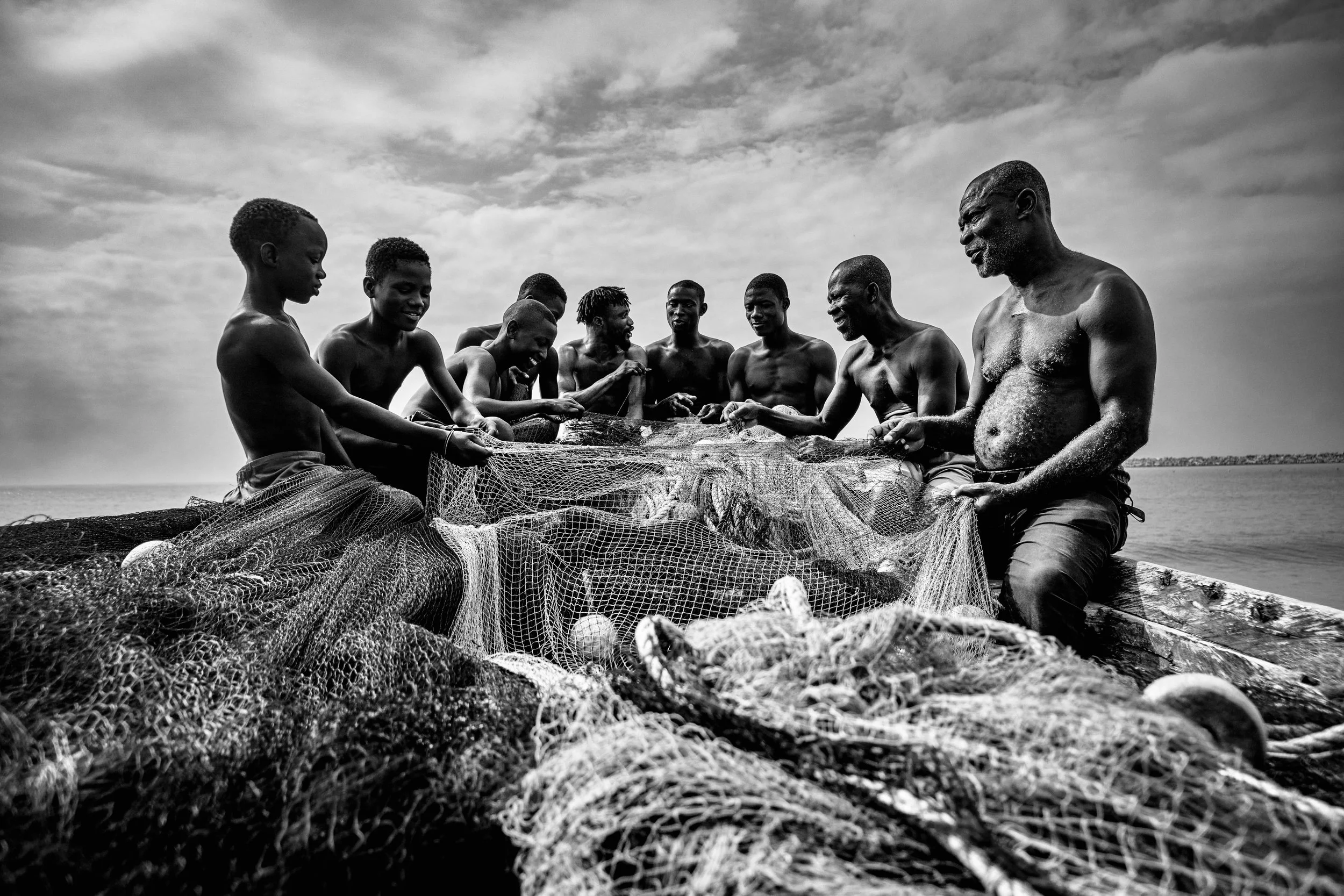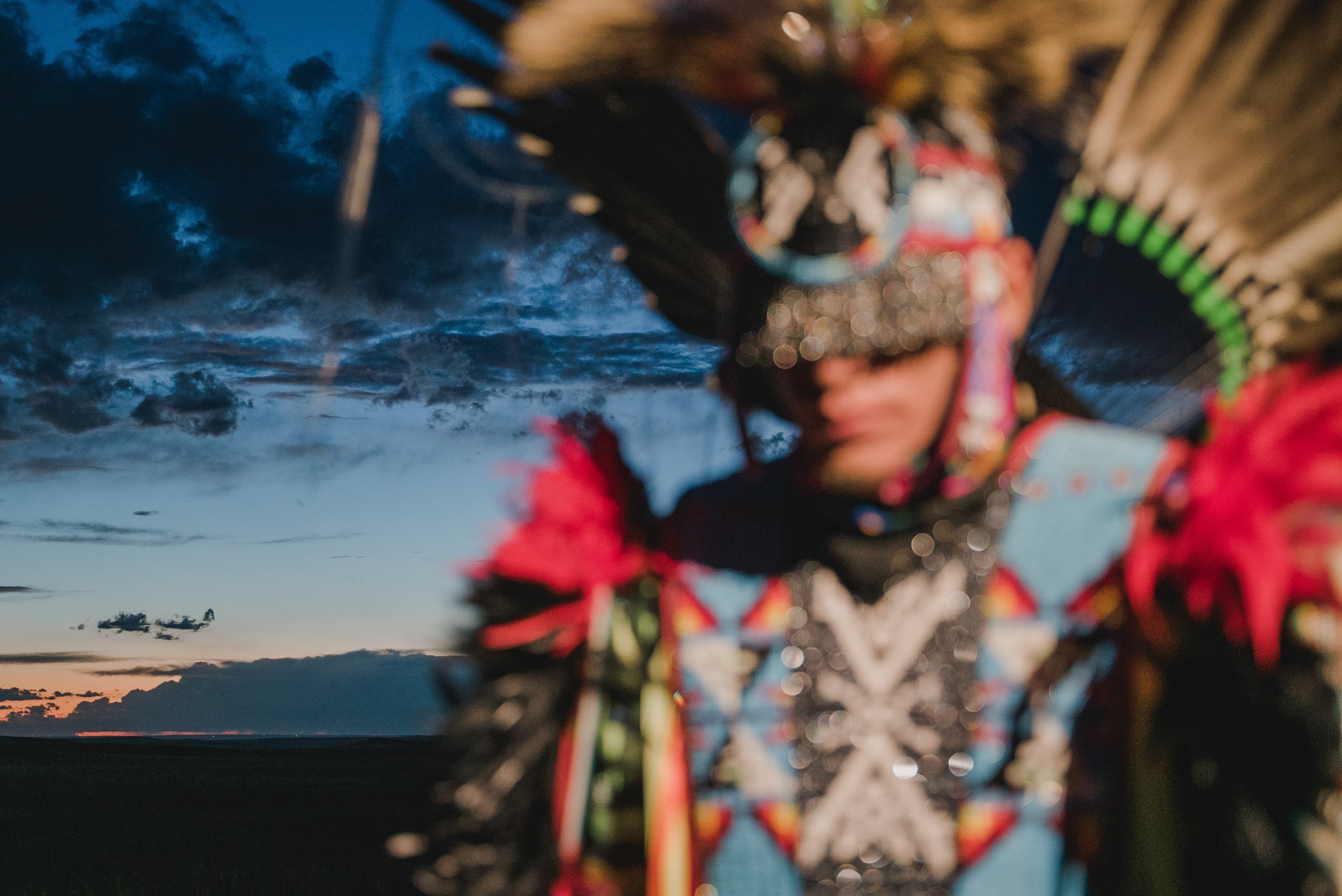Meet the selected photographers from the 2023 Through Your Lens Submissions.
IMAGES BY AMY IJAMS, CALEB MENSAH, CLAUDIA GSCHWEND , DREW ARRIETA, MAYANK MAKHIJA, MONICA PAEZ, TAMARA BLAZQUEZ HAIK
WORDS BY TAMARA BLAZQUEZ HAIK
EDITED BY DANIELLE KHAN DA SILVA
What does it mean to “Protect the Sacred”?
Many Indigenous communities of the world see their territories, communities, water, and non-human beings as “sacred.” What happens when we see more relationally? And how does a changed relationship with everything around us affect our capacity to protect it? This year, we welcome our community of photographers and storytellers to submit their favourite photos that answer this question.
With images ranging from Indigenous traditions and cultures, wildlife and nature, and the relationships between the natural, spiritual and human worlds, these storytellers shared with us their visions of the sacred, as we believe that when we change the story, we change everything.
The following images were selected by our community of storytellers:
"Untitled” by Amy Ijams. Tucson, Arizona. @amy_ijams_photo
“Alexandra is a daughter of the Navajo Nation in Arizona. Atop Green's Peak at 10,000-feet elevation, Alex wears heirloom jewelry and a traditional outfit, a manner of practicing hozho—walking in beauty. While living a modernized life in a city of more than 4 million, Alex protects the sacred of her Dineh ancestors with pride.”
“Family Heirloom” by Caleb Mensah. Accra, Ghana. @thecaleb.mensah
This photograph is a utopian representation of the generational profession of the Quartey-Fios and many other families like theirs living along the shores of Labadi, Accra. They make their living from the sea and hence double down as custodians of the fisherfolk culture, marine life and the beach. They're known to preserve and ensure clean fishing practices and require all boats that sail their shores to have only authorized fishing apparatus. They're the gatekeepers of Asaase Yaa's sea monsters and spirit of the sea.
This shot was taken in the morning of their fishing holiday, or Sabbath, where they take a day off within the week to repair their boats and mend their nets. I leveraged the natural light of the time of day when the sun is at a low intensity, to capture the experience of time and space.
The photo was staged to respond to the style of a still-life, with a cinematic capture washing over the image. As serendipitous as the moment was, their starboard arrangement was a depiction of sympathetic magic, as the older generation expressed their desire for their generational profession to—like a proverbial heirloom—stay in the family and not be broken or cast aside, owing to the quest of the younger generation for white-collar jobs as is promoted and purported by mainstream media as a result of formal education. They hope to maintain the literacy of the sea in their family, as opposed to the so-called “dignified” jobs.
“Traditions of the Shanenawa Tribe” by Claudia Gschwend. London, United Kingdom. @claudia_gschwend
This image is part of a personal project called “New Forms of Identities” in collaboration with Anthropologist Nathalie Pede. In January 2022, we were able to accompany the Indigenous community of the “Shanenawa,” based in the Brazilian Amazon.
The project’s focus lies on the transformations of the community practices due to societal and global changes. The influence of modern technology and the globalized world raises questions about their identity. They are forced to adapt their ways of living, housing, alimentation, and economic activities. Influenced through these external factors, the Shanenawa create new forms of cultural practices.
“Always on Native Land” by Drew Arrieta. Saint Paul, United States. @itsdrw
Canku One Star at the Badlands in South Dakota, USA. Lakota people first called this area mako sica, whose literal translation is “bad lands.”
This photo project chronicles the journey of Canku One Star, a Men's Fancy War Dancer, who graces colonized sacred locations in America, where Indigenous history has been forgotten. Through his dance, Canku serves as a poignant reminder that we constantly tread upon Native land, irrespective of our location within America.
“Celebrating Chhath: Prayers to the Sun God” by Mayank Makhija. New Delhi, India. @_mayankmakhija
Hindu devotees perform rituals as they stand amidst the polluted waters of the river Yamuna covered with a layer of foam, on the occasion of the Chhath Puja festival in New Delhi, India. Chhath, an ancient Hindu festival, is historically native to the Indian subcontinent and the southern parts of Nepal.
During this time, rituals are performed to thank the sun god for sustaining life on Earth. Idol worship is not practiced in this festival, which means there is no need for plastic, metals or colours in the construction of idols that are later immersed in nearby water bodies causing pollution. That is why this particular festival is considered the most eco-friendly among all Hindu festivals by environmentalists.
“Sabiduría” by Mónica Paez. Galapagos, Ecuador. @monicaapaezfoto
The Amazon rainforest in South America has been over-exploited and abused due to global merchandising interests. Governments throughout history have destroyed the richness of the land without considering the damage to future generations—the damage to the roots of knowledge.
Ancestral knowledge, which has originated in the Amazon rainforest, goes beyond the mere extraction of oil; this ancestral knowledge cannot be extracted for individual interests. We need to go back to the roots, to recognize the sacred in every river, in every tree, and learn to coexist with nature. We need to learn to grow as ancestral communities know how to do.
The use of the Polaroid lift technique on this file photograph, taken in the Ecuadorian rainforest in December 2020, aims to evoke the responsibility we have in our hands to rescue the ancestral knowledge hidden in the Amazon rainforests of South America.
"Protecting the Turtles" by Tamara Blazquez Haik. Mexico City, Mexico. @tamarablazquezhaik
The Olive Ridley Sea Turtle (Lepidochelys olivacea) is one of the many species of sea turtles that are being protected and helped to survive by the NGO Red Tortuguera A.C. in Bahía de Banderas, an area located between the Jalisco and Nayarit states in Mexico's Pacific Coast. Despite this species being one of the most abundant in the world, both the IUCN's Red List of Endangered species and Mexico's Federal Law still list it as Vulnerable, as any removal of protection for the species would result in more poaching, hunting and irresponsible management that would very quickly lead to the species' extinction.
Vicente Peña, president of Red Tortuguera A.C, has been protecting the Olive Ridley Sea Turtle and other sea turtle species to survive and thrive in three Mexican States along the Pacific Coast: Jalisco, Nayarit and Colima for years. His work includes monitoring turtles, scientific investigation to further understand the turtles, the threats they face like poaching, urbanization and climate change, collecting turtles’ eggs from nests on beaches for their protection and releasing the hatchlings back into the wild.
In this photograph, Vicente is holding an Olive Ridley Sea Turtle hatchling, a baby he has protected since it was in its egg until the time for its release back into the wild.












